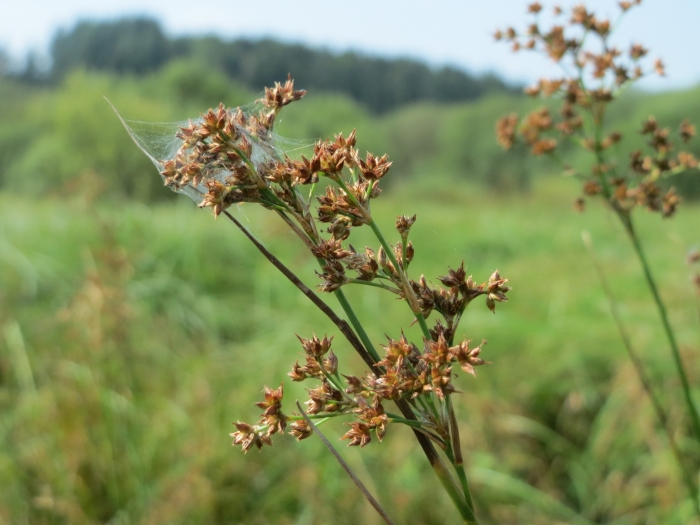Sharp-Flowered Rush
(Juncus acutiflorus)
Sharp-Flowered Rush (Juncus acutiflorus)
/
/

Andreas Rockstein
CC BY-SA 4.0
Image By:
Andreas Rockstein
Recorded By:
Copyright:
CC BY-SA 4.0
Copyright Notice:
Photo by: Andreas Rockstein | License Type: CC BY-SA 4.0 | License URL: http://creativecommons.org/licenses/by-sa/4.0/ | Rights Holder: Andreas Rockstein | Publisher: iNaturalist | Date Created: 2015-08-13T11:47:53-07:00 |

























Estimated Native Range
Summary
Juncus acutiflorus, commonly known as sharp-flowered rush, is a perennial herb native to acidic fens, wet heathlands, and moist woodlands across Europe, including northern Ireland. It typically grows to about 3 feet tall, forming dense clumps. This rush is characterized by its sharp-looking flowers that appear in various shades of brown and maroon from July to September. The inflorescence is usually a loose cluster of many small flowers, which are not particularly showy but have a subtle beauty. The leaves are straight, smooth, and cylindrical, with a jointed texture that adds to the plant’s structural interest.
Sharp-flowered rush is valued for its ability to thrive in wet conditions and is often used in the restoration of wetlands and natural water filtration systems. It is also appreciated for its textural contrast in water gardens and boggy areas. In cultivation, it requires consistently moist to wet soils and can tolerate partial shade to full sun. While it is sensitive to nitrate levels and may suffer from chlorosis in high-nitrate environments, it is generally a low-maintenance plant that can be an indicator of water quality.CC BY-SA 4.0
Sharp-flowered rush is valued for its ability to thrive in wet conditions and is often used in the restoration of wetlands and natural water filtration systems. It is also appreciated for its textural contrast in water gardens and boggy areas. In cultivation, it requires consistently moist to wet soils and can tolerate partial shade to full sun. While it is sensitive to nitrate levels and may suffer from chlorosis in high-nitrate environments, it is generally a low-maintenance plant that can be an indicator of water quality.CC BY-SA 4.0
Plant Description
- Plant Type: Grass
- Height: 1-2 feet
- Width: 1-2 feet
- Growth Rate: Moderate
- Flower Color: N/A
- Flowering Season: Summer
- Leaf Retention: Evergreen
Growth Requirements
- Sun: Full Sun, Part Shade
- Water: High
- Drainage: Slow, Standing
Common Uses
Erosion Control, Low Maintenance, Water Garden
Natural Habitat
Acidic fens, wet heathlands, and moist woodlands across Europe
Other Names
Common Names:
Scientific Names: , Juncus acutiflorus, Juncus acutiflorus subsp. genuinus, Juncus acutiflorus var. genuinus, Juncus aquaticus, Juncus articulatus f. acutiflorus, Juncus diaphragmarius, Juncus nigricans, Juncus sylvaticus, Juncus sylvaticus subsp. brevirostris
GBIF Accepted Name: